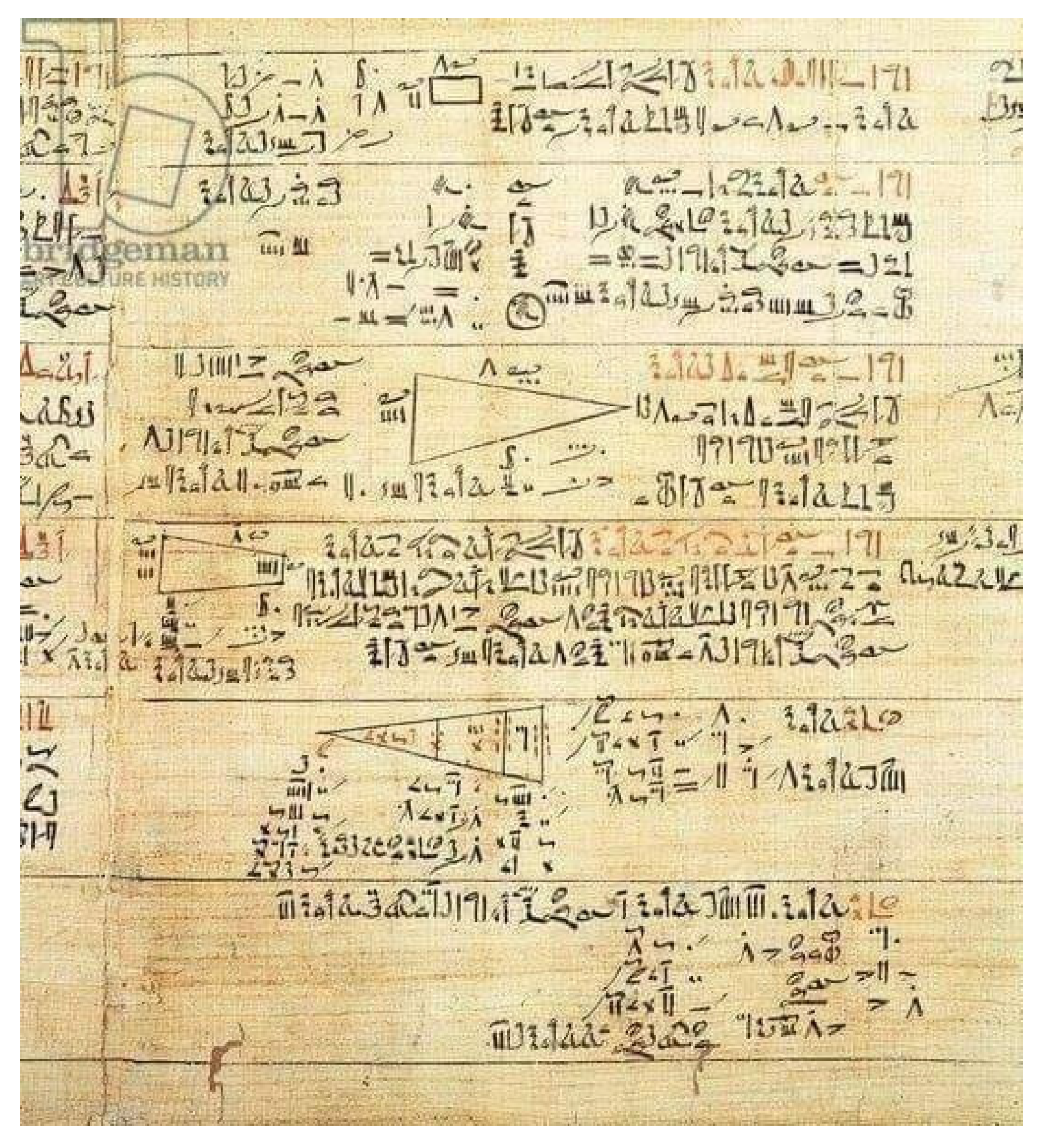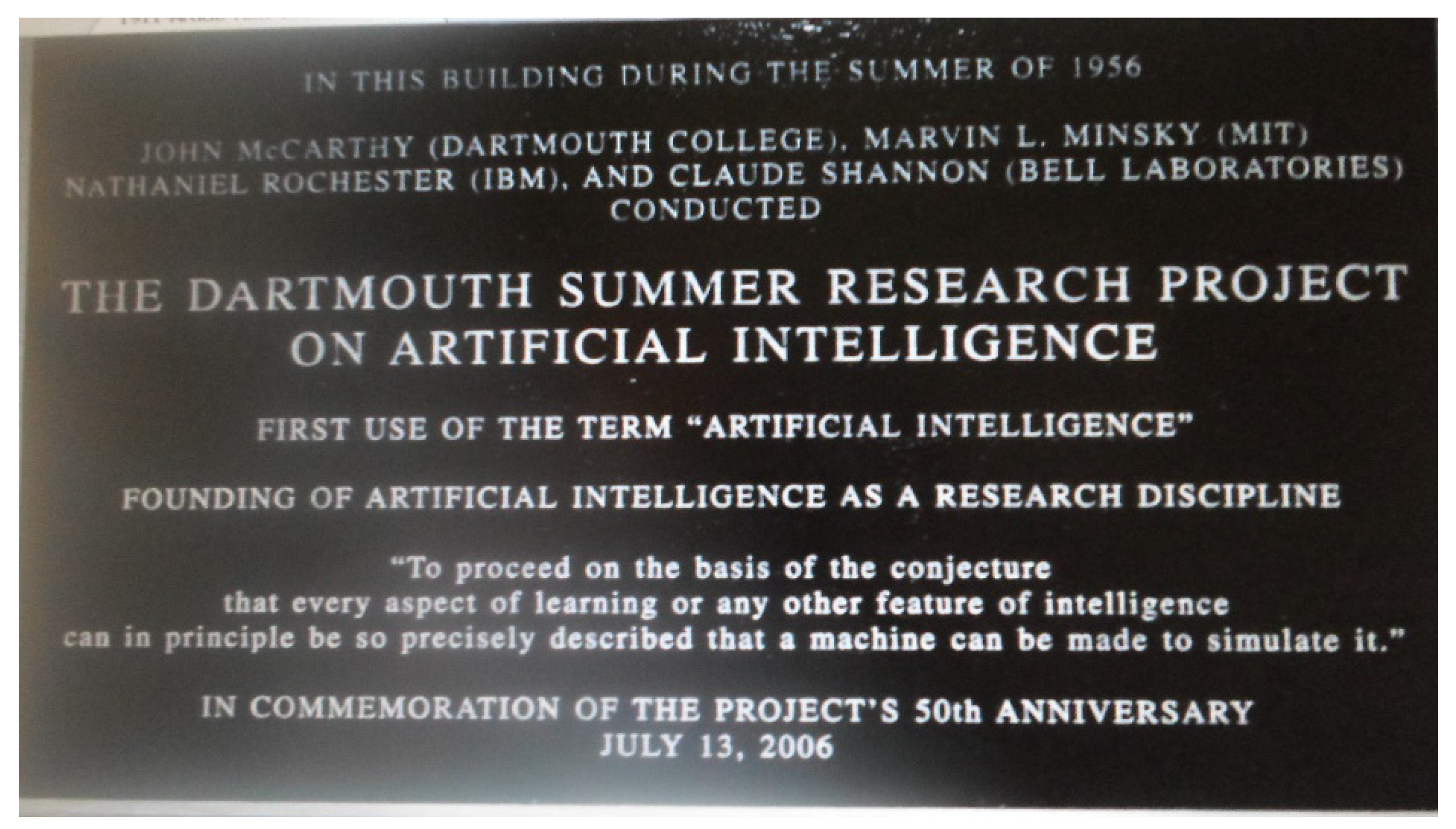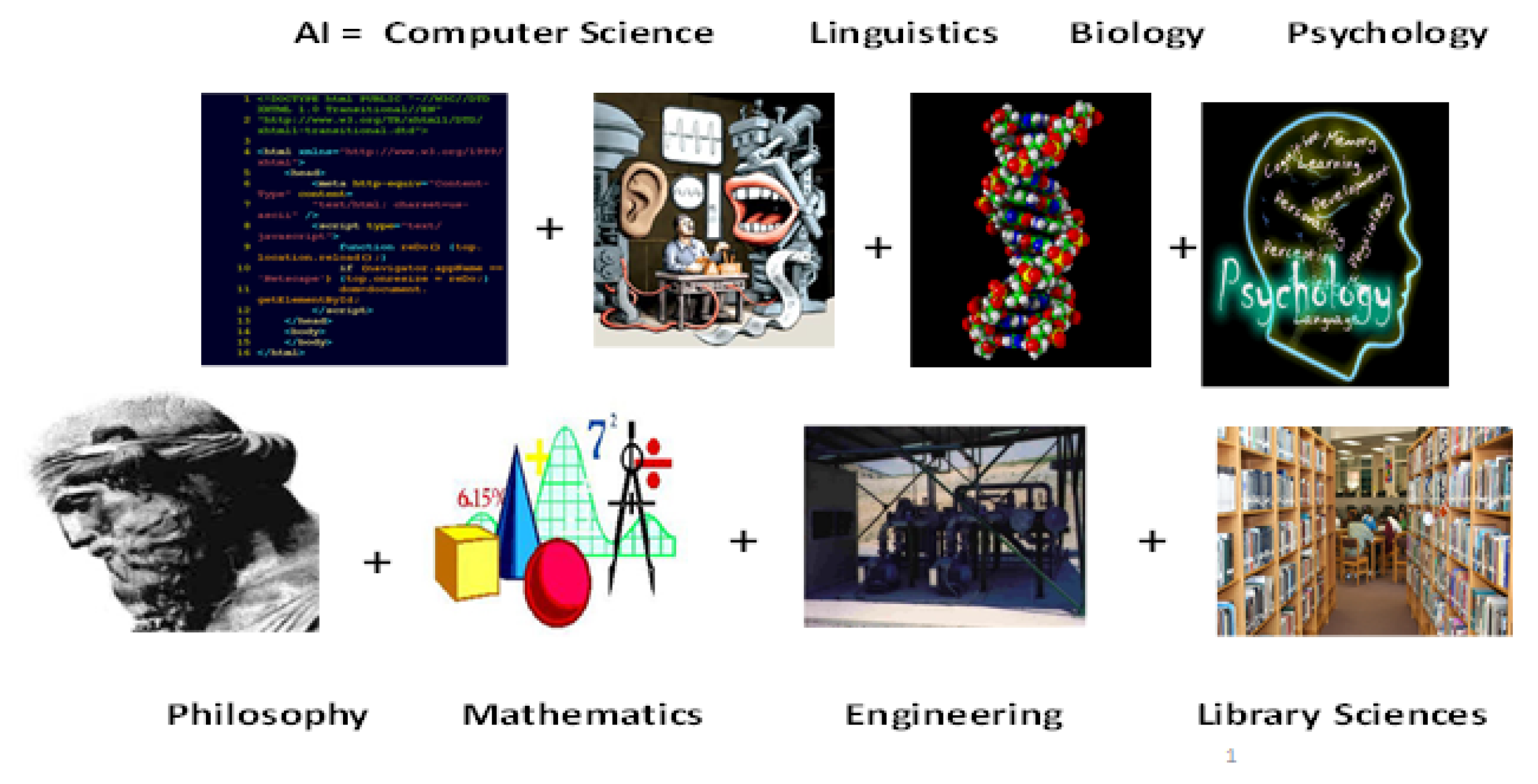Benefits and Limitations of the Artificial with Respect to the Traditional Learning of Mathematics
Abstract
:1. Introduction
2. Traditional Learning Theories and Teaching Methods of Mathematics
- Behaviorism, a theory established by the American psychologist John B. Watson (1878–1958), which considers learning as the acquisition of new behavior based on environmental conditions and discounts any independent activities of the mind [5].
- Cognitivism, which replaced behaviorism during the 1960′s as the dominant theory for the process of learning and argues that knowledge can be seen as a process of symbolic mental constructions and that learning is defined as change in individual’s cognitive structures [6]. More explicitly, the learning process involves representation of the stimulus input, i.e., use of the contents of one’s memory to find the suitable input information, interpretation of the input data to produce the new knowledge, generalization of this knowledge to a variety of situations and categorization of it in the already existing learner’s cognitive schemata. In this way the individual becomes able to retrieve, when necessary, the new information from his/her proper cognitive schema and to use it for solving related problems. Changes in the learner’s behavior are in fact observed, but only as an indication of what is occurring in his/her mind. In other words, cognitive theories look beyond behavior to explain the brain-based process of learning.
- Constructivism, a philosophical framework based on Piaget’s theory for learning and formally introduced by von Clasersfeld during the 1970s, which suggests that knowledge is not passively received from the environment, but is actively constructed by the learner through a process of adaptation based on and constantly modified by the learner’s experience of the world [7]. This framework is usually referred as cognitive constructivism. The synthesis of the ideas of constructivism with Vygosky’s social development theory [8] created the issue of social constructivism [9]. According to Vygosky, learning takes place within some socio-cultural setting. Shared meanings are formed through negotiation in the learning environment, leading to the development of common knowledge. The communities of practice (CoPs), for instance, are groups of people, experts or practitioners in a particular field, with a concern for something they do and they learn how to do it better as they interact regularly, having therefore the opportunity to develop personally and professionally [10]. The basic difference between cognitive and social constructivism is that the former argues that thinking precedes language, whereas the latter supports the exactly inverse approach.
3. Computers in Mathematics Education
4. Artificial Intelligence in Mathematics Teaching
- Construction of the knowledge base, involving collection, acquisition, and representation of the required knowledge. The success of that task presupposes the choice of the appropriate in each case among the many existing techniques (e.g., lists, trees, semantic networks, frames, production rules, cases, ontologies, etc.) that fits better to the knowledge domain and the problem to be solved.
- Selection of the suitable reasoning and inference methodology, e.g., commonsense reasoning, model-based, qualitative, causal, geometric, probabilistic or fuzzy reasoning, etc.
- Selection of intelligent authoring shells, which allow the course instructor to easily enter the knowledge domain without requiring computer programming skills. Those shells facilitate also the entry of examples/exercises including problem statements, solution steps and explanations and the integration of suitably developed by the specialists multimedia course wear. The examples may be in the form of scenarios or simulations. In addition to the course knowledge the instructor has the possibility to specify the pedagogical instruction, i.e., the best way to teach a particular student, and to choose how to assess actions and determine student mastery. The most common authoring shells are DIAG, RIDES-VIVIDS, XAIDA, REDEEM, EON, INTELLIGENT TUTOR, D3 TRAINER, CALAT, INTERBOOK, and PERSUADE [46].
- R1: Retrieve from the system’s library the suitable past case.
- R2: Reuse this case for the solution of the given problem.
- R3: Revise the solution of the retrieved case for solving the new problem
- R4: Retain the revised solution for possible use with analogous problems in future.
5. Comparing the Artificial and the Traditional Teaching and Learning of Mathematics
- As we have already seen in Section 3, computers provide through the Internet a wealth of information to teachers and learners, while suitably designed by the experts mathematical software packages (SLS’s) give to the instructor the opportunity to apply innovative teaching and learning methods in the class, like the ACE instruction, the flipped learning, etc., that increase the student imagination and PS skills [59,60]. Also, for the evolution of smart learning in Korean public Education, see [61].
- E-learning gives to the learner 365 days per year access to the learning subject in contrast to the traditional learning, which is scheduled as a one-time class and requires the learner’s physical presence. Another advantage of the e- learning is that it can be used at the same time by a large population spread throughout the world. The e-learning material, once developed as a course, could be easily modified in future for similar uses. Through e-learning students can learn in their own speed what is important for them by skipping unnecessary information. In addition, e-learning is obviously much cheaper than the traditional one, which involves many extra costs (travel, boarding, books, etc.). In concluding, e-learning appears today as a promising alternative to traditional classroom instruction, especially in cases of remote lifelong learning and training, while it can also be used as a complement of the classroom learning [62].
- When engaged in the CBR approach the students, with many cases available, become able to recognize more alternatives and to benefit from the failures of the others. Cases indexed by experts will reveal to students suitable ways of looking at a problem, a thing that they may not have the expertise to do without the help of a CBR system. Research reveals that students learn best when they are presented with examples of PS knowledge and then asked to apply the acquired knowledge to real situations [14]. The CBR methodology is useful in particular for cases where there is much to remember, because when reasoning analogically one tends to focus only on the few possible analogous past cases. In general, one could say that a CBR system provides the student with a model of the way that decision making must be done, i.e., what actions ought to be performed for the solution of the problem in hands.
- Apart from helping the instructor in the search of learning materials and pedagogical resources in the internet, ontologies are also useful for the evaluation of the students’ learning performance and for recommendations and grouping of them based on their learning behavior and skills. Further, they facilitate the assessment of the learning resources and of the web-based courses [63].
6. Discussion and Conclusions
Author Contributions
Funding
Conflicts of Interest
References
- Voskoglou, M.G. Problem solving in the forthcoming era of the third industrial revolution. Int. J. Psychol. Res. 2016, 10, 361–380. [Google Scholar]
- Rifkin, J. The Third Industrial Revolution: How Lateral Power is Transforming Energy, the Economy and the World; Palgrave McMillan: London, UK, 2011. [Google Scholar]
- Rifkin, J. The Zero Marginal Cost Society: The Internet of Things, the Collaborative Commons and the Eclipse of Capitalism; St. Martin’s Press: New York, NY, USA, 2014. [Google Scholar]
- Schwab, K. The Fourth Industrial Revolution; Crown Publishing Group: New York, NY, USA, 2016. [Google Scholar]
- Cherry, K. History and Key Concepts of Behavioral Psychology. 2019. Available online: https://www.verywellmind.com/behavioral-psychology-4157183 (accessed on 18 March 2020).
- Wallace, B.; Ross, A.; Davies, J.B.; Anderson, T. The Mind, the Body and the World: Psychology after Cognitivism; Imprint Academic: Upton Pyne, UK, 2007. [Google Scholar]
- Taber, K.S. Constructivism as educational theory: Contingency in learning, and optimally guided instruction. In Educational Theory; Hassaskhah, J., Ed.; Nova Science Publishers: Hauppauge, NY, USA, 2011; Chapter 2; pp. 39–61. [Google Scholar]
- McKinley, J. Critical argument and writer identity: Social constructivism as a theoretical framework for EFL academic writing. Crit. Inq. Lang. Stud. 2015, 12, 184–207. [Google Scholar] [CrossRef]
- Crawford, K. Vygotskian approaches in human development in the information era. Educ. Stud. Math. 1996, 31, 43–62. [Google Scholar] [CrossRef]
- Doabler, T.; Fien, H. Explicit mathematics instruction: What teachers can do for teaching students with mathematics difficulties. Interv. Sch. Clin. 2013, 48, 276–285. [Google Scholar] [CrossRef]
- Smith, J.L.M.; Saez, L.; Doabler, C.T. Using explicit and systematic instruction to support working memory. Teach. Except. Child. 2016, 48, 275–281. [Google Scholar] [CrossRef]
- Kinard, J.T. Rigorous Mathematical Thinking: Conceptual Formation in the Mathematics Classroom; Cambridge University Press: Cambridge, UK, 2008. [Google Scholar]
- Voskoglou, M.G. Problem-solving as a component of the constructivist view of learning. J. Educ. Res. 2010, 4, 93–112. [Google Scholar]
- Voskoglou, M.G. The application-oriented teaching of mathematics. In Proceedings of the International Conference on Mathematics Education, Svishtov, Bulgaria, 3–5 June 2005; pp. 85–90. [Google Scholar]
- Jaworski, B. Theory and practice in mathematics teaching development: Critical inquiry as a mode of learning in teaching. J. Math. Teach. Educ. 2006, 9, 187–211. [Google Scholar] [CrossRef]
- Voskoglou, M.G. Communities of practice for teaching and learning mathematics. Am. J. Educ. Res. 2019, 7, 186–191. [Google Scholar] [CrossRef]
- Voskoglou, M.G. A markov chain representation of the “5 E’s” instructional treatment. Phys. Math. Educ. 2019, 3, 7–11. [Google Scholar] [CrossRef] [Green Version]
- Lahdenpera, J.; Postareff, L.; Ramo, J. Supporting quality of learning in university mathematics: A comparison of two instructional designs. Int. J. Res. Undergrad. Mat. Educ. 2019, 5, 75–96. [Google Scholar] [CrossRef] [Green Version]
- Voskoglou, M.G. Comparing teaching methods of mathematics at university level. Educ. Sci. 2019, 9, 204. [Google Scholar] [CrossRef] [Green Version]
- Gallistel, C.R. Mathematical cognition. In The Cambridge Hanbook for Thinking and Reasoning; Holyak, K., Morrison, R., Eds.; Cambridge University Press: Cambridge, UK, 2005; pp. 559–588. [Google Scholar]
- Martinez-Garcia, M.; Zhang, Y.; Gordon, T. Memory pattern identification for feedback tracking control in human-machine systems. Hum. Factors 2019, 0018720819881008. [Google Scholar] [CrossRef] [PubMed] [Green Version]
- Martinez-Garcia, M.; Zhang, Y.; Gordon, T. Modeling lane keeping by a hybrid open-closed loop pulse control scheme. IEEE Trans. Ind. Inform. 2016, 12, 2256–2265. [Google Scholar] [CrossRef] [Green Version]
- Arnon, I.; Cottrill, J.; Dubinsky, E.; Oktac, A.; Roa, S.; Trigueros, M.; Weller, K. APOS Theory: A Framework for Research and Curriculum Development in Mathematics Education; Springer: Berlin/Heidelberg, Germany, 2014. [Google Scholar]
- Voskoglou, M.G. An application of the APOS/ACE approach in teaching the irrational numbers. J. Math. Sci. Math. Educ. 2013, 8, 30–47. [Google Scholar]
- Borji, V.; Voskoglou, M.G. Applying the APOS theory to study the student understanding of the polar coordinates. Am. J. Educ. Res. 2016, 4, 1149–1156. [Google Scholar]
- Lee, J.; Lim, C.; Kim, H. Development of an instructional design model for flipped learning in higher education. Educ. Technol. Res. Dev. 2017, 65, 427–453. [Google Scholar] [CrossRef] [Green Version]
- Lage, M.G.; Platt, G.J.; Tregla, M. Inverting the classroom: A gateway to create an inclusive learning environment. J. Econ. Educ. 2000, 31, 30–43. [Google Scholar] [CrossRef]
- Bergmann, J.; Sams, A. Flip Your Classroom: Reach Every Student in Every Class Every Day, 1st ed.; ISTE: Washington, DC, USA, 2012; pp. 34–40. [Google Scholar]
- Papert, S. An exploration in the space of Mathematics Education. Int. J. Comput. Math. 1996, 1, 95–123. [Google Scholar] [CrossRef]
- Wing, J.M. Computational thinking. Commun. ACM (Assoc. Comput. Mach.) 2006, 49, 33–35. [Google Scholar] [CrossRef]
- Liu, J.; Wang, L. Computational thinking in discrete mathematics. In Proceedings of the IEEE 2nd International Workshop on Education Technology and Computer Science, Wuhan, China, 6–7 March 2010; pp. 413–416. [Google Scholar]
- Voskoglou, M.G.; Buckley, S. Problem solving and computers in a learning environment. Egypt. Comput. Sci. J. 2012, 36, 28–46. [Google Scholar]
- Kazimoglu, C.; Kiernan, M.; Bacon, L.; MacKinnon, L. Understanding computational thinking before programming: Developing guidelines for the design of games to learn introductory programming through game-play. Int. J. Game-Based Learn. 2011, 1, 30–52. [Google Scholar] [CrossRef] [Green Version]
- Payne Carter, S.; Greenberg, K.; Walter, M. The Impact of Academic Usage in Academic Performance: Evidence from a Randomized Trial on the US Military Academy, Working Paper #2016.02, US Military Academy. 2016. Available online: https://seii.mit.edu/research/study /the-impact-of-computer-usage -on -academic-performance-evidence-from-a-randomized-trial-at-the-united-states-military-academy (accessed on 19 March 2020).
- Einhorn, S. Micro-Worlds, Computational Thinking, and 21st Century Learning; White Paper; Logo Computer Systems Inc.: Westmount, QC, Canada, 2012. [Google Scholar]
- Mitchell, M. Artificial Intelligence: A Guide for Thinking Humans; Parrar, Straus and Gtraux: New York, NY, USA, 2019. [Google Scholar]
- Kastranis, A. Artificial Intelligencefor People and Business; O’ Reily Media Inc.: Sebastopol, CA, USA, 2019. [Google Scholar]
- Moor, J. The Dartmouth college artificial intelligence conference: The next fifty years. Ai Mag. 2006, 27, 87–91. [Google Scholar]
- Hodges, A. Alan Turing: The Enigma (The Centenary Edition); Princeton University Press: Princeton, NJ, USA, 2012. [Google Scholar]
- Yang, X. Accelerated move to AI in China. ECNU Rev. Educ. 2019, 2, 347–352. [Google Scholar] [CrossRef]
- Goyal, S. E-Learning: Future of education. J. Educ. Learn. 2012, 6, 239–242. [Google Scholar] [CrossRef]
- Das, S.; Day, A.; Pal, A.; Roy, N. Applications of artificial intelligence in machine learning. Int. J. Comput. Appl. 2015, 115, 31–41. [Google Scholar]
- Arnold, L.; Rebecchi, S.; Chevallier, S.; Paugam-Moisy, H. An introduction to deep learning. In Proceedings of the European Symposium on Artificial Neural Networks, Bruges, Belgium, 27–29 April 2011; pp. 477–488. [Google Scholar]
- Salem, A.B.M.; Parusheva, S. Exploiting the knowledge engineering paradigms for designing smart learning systems. East. -Eur. J. Enterp. Technol. 2018, 2, 38–44. [Google Scholar] [CrossRef] [Green Version]
- Salem, A.B.M. Computational intelligence in smart education and learning. In Proceedings of the International Conference on Information and Communication Technology in Business and Education; University of Economics: Varna, Bullgaria, 2019; pp. 30–40. [Google Scholar]
- Salem, A.B.M.; Nikitaeva, N. Knowledge engineering paradigms for smart education and smart learning systems. In Proceedings of the 42nd International Convention of the MIPRO Croatian Society, Opatija, Croatia, 20–24 May 2019; pp. 1823–1826. [Google Scholar]
- Tankelevcience, L.; Damasevicius, F. Characteristics for domain ontologies for web based learning and their applications for quality evaluation. Inform. Educ. 2009, 8, 131–152. [Google Scholar]
- Cakula, S.; Salem, A.B.M. Ontology-Based Collaborative Model for e-Learning. In Proceedings of the Annual International Conference on Virtual and Augmented Reality in Education, Latvia, Valmiera, 18 March 2011; pp. 98–105. [Google Scholar]
- Voskoglou, M.G. Case-based reasoning: a recent theory for problem-solving and learning in computers and people. Commun. Comput. Inf. Sci. 2008, 19, 314–319. [Google Scholar]
- Voskoglou, M.G. An absorbing Markov-chain model for case-based reasoning. Int. J. Comput 2017, 2, 99–105. [Google Scholar]
- Voskoglou, M.G.; Salem, A.B.M. Analogy based and case based reasoning: Two sides of the same coin. Int. J. Appl. Fuzzy Sets Artif. Intell. 2014, 4, 5–51. [Google Scholar]
- Zadeh, L.A. Fuzzy sets. Inf. Control 1965, 8, 338–353. [Google Scholar] [CrossRef] [Green Version]
- Klir, G.J.; Folger, T.A. Fuzzy Sets, Uncertainty and Information; Prentice-Hall: London, UK, 1988. [Google Scholar]
- Voskoglou, M.G. Finite Markov Chain and Fuzzy Logic Assessment Models: Emerging Research and Opportunities; Create Space Independent Publishing Platform, Amazon: Columbia, SC, USA, 2017. [Google Scholar]
- Voskoglou, M.G. Generalizations of fuzzy sets and relative theories. In An Essential Guide to Fuzzy Systems, Commentary; Voskoglou, M., Ed.; Nova Science Publishers Inc.: Hauppauge, NY, USA, 2019; pp. 345–353. [Google Scholar]
- Voskoglou, M.G. An application of the “5 E’s” Instructional treatment for teaching the concept of the fuzzy set. Sumer. J. Educ. Linguist. Lit. 2019, 2, 73–76. [Google Scholar]
- Breazeal, C. Designing Sociable Robots; MIT Press: Cambridge, MA, USA, 2002. [Google Scholar]
- Taipale, S.; Vincent, J.; Sapio, B.; Lugano, G.; Fortunati, L. Introduction: Situating the human in social robots. In Social Robots from a Human Perspective; Vincent, J., Taipale, S., Sapio, B., Lugano, G., Fortunati, L., Eds.; Springer: Dordrecht, The Netherlands, 2015; pp. 1–17. [Google Scholar]
- Dneprovskaya, N.V. Knowledge management system as a basis for smart learning. Open Educ. 2018, 22, 43–61. [Google Scholar] [CrossRef]
- Merzon, E.E.; Ibatullin, R.R. Architecture of smart learning courses in higher education. In Proceedings of the IEEE 10th International Conference on Application of Information and Communication Technologies, Baku, Azerbaijan, 12–14 October 2016; pp. 1–5. [Google Scholar]
- Kim, T.; Cho, J.Y.; Lee, B.G. Evolution to smart learning in public education: A case study of Korean public education. In Proceedings of the IFIP Advances in Information and Communication Technology International Conference on Open and Social Technologies for Networked Learning; Ley, T., Ruohonen, M., Laanpere, M., Tatnall, A., Eds.; Springer: Berlin/Heidelberg, Germany, 2013; Volume 395. [Google Scholar]
- Salem, A.-B.M. Intellectual e-learning systems. In Proceedings of the Annual International Conference on Virtual and Augmented Reality in Education, Vidzeme University of Applied Sciences, Valmiera, Latvia, 18 March 2011; pp. 16–23. [Google Scholar]
- Salem, A.-B.M. Ontological engineering in e-learning. In Proceedings of the 8th International Conference on Emerging E-Learning Technologies and Applications, Information and Communication Technologies in Learning, Stara Lesna, The High Tatras, Slovakia, 27–29 October 2010. [Google Scholar]
- Martinez-Garcia, M.; Gordon, T.; Shu, L. Extended crossover model for human-control of fractional order plants. IEEE Access 2017, 5, 27622–27635. [Google Scholar] [CrossRef]







© 2020 by the authors. Licensee MDPI, Basel, Switzerland. This article is an open access article distributed under the terms and conditions of the Creative Commons Attribution (CC BY) license (http://creativecommons.org/licenses/by/4.0/).
Share and Cite
Voskoglou, M.G.; Salem, A.-B.M. Benefits and Limitations of the Artificial with Respect to the Traditional Learning of Mathematics. Mathematics 2020, 8, 611. https://doi.org/10.3390/math8040611
Voskoglou MG, Salem A-BM. Benefits and Limitations of the Artificial with Respect to the Traditional Learning of Mathematics. Mathematics. 2020; 8(4):611. https://doi.org/10.3390/math8040611
Chicago/Turabian StyleVoskoglou, Michael Gr., and Abdel-Badeeh M. Salem. 2020. "Benefits and Limitations of the Artificial with Respect to the Traditional Learning of Mathematics" Mathematics 8, no. 4: 611. https://doi.org/10.3390/math8040611
APA StyleVoskoglou, M. G., & Salem, A.-B. M. (2020). Benefits and Limitations of the Artificial with Respect to the Traditional Learning of Mathematics. Mathematics, 8(4), 611. https://doi.org/10.3390/math8040611




